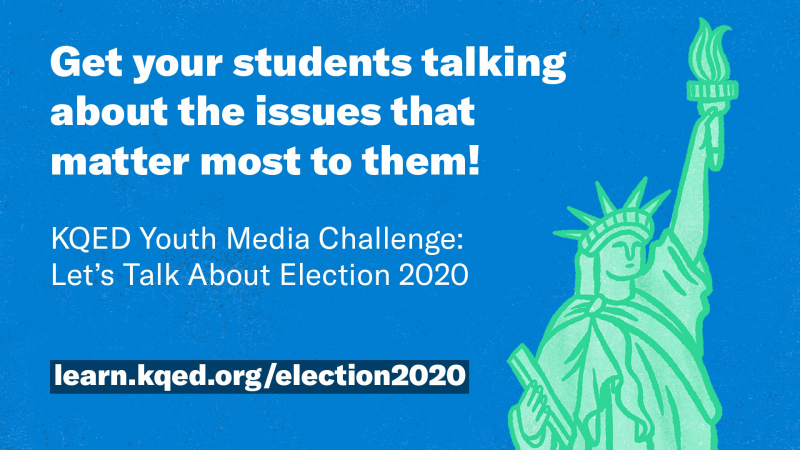In times of great change and uncertainty, making our voices heard is more important than ever. The same is true for our students. How will they add to the national discussion as our country responds to a global pandemic?
KQED’s Youth Media Challenge: Let’s Talk About Election 2020 launched in January before the world changed so much. Its focus on giving students a voice has never been more relevant.
The challenge asks middle and high school students to share their voice–literally–by making audio or video commentaries about an issue that matters to them. With support from a teacher, they then publish their commentary on KQED Learn.
But how can teachers support students in this election challenge while we are all learning remotely? Does it make sense to try?
Absolutely, according to high school history teacher Bob Kelly, whose students in rural O’Neals, CA, completed the Youth Media Challenge first semester. He plans to do it again with students this semester from a distance.
View the recording of a webinar with KQED and teacher Bob Kelly to learn more about the challenge and how to implement it.
“We need to help our students find their voices… We also need to help them raise their voices when they need to be heard, teach them how to be heard and then what to do when they are heard. This project reaches our students at each step in this process,” Kelly says.
Youth Media Challenge: Step-by-Step
“Make a plan from the start,” Kelly says. Defining each project step and checking in with students as the steps are complete is key. We know that remote teaching circumstances are different for every educator, but the steps below and this example assignment sequence are a good place to start.
